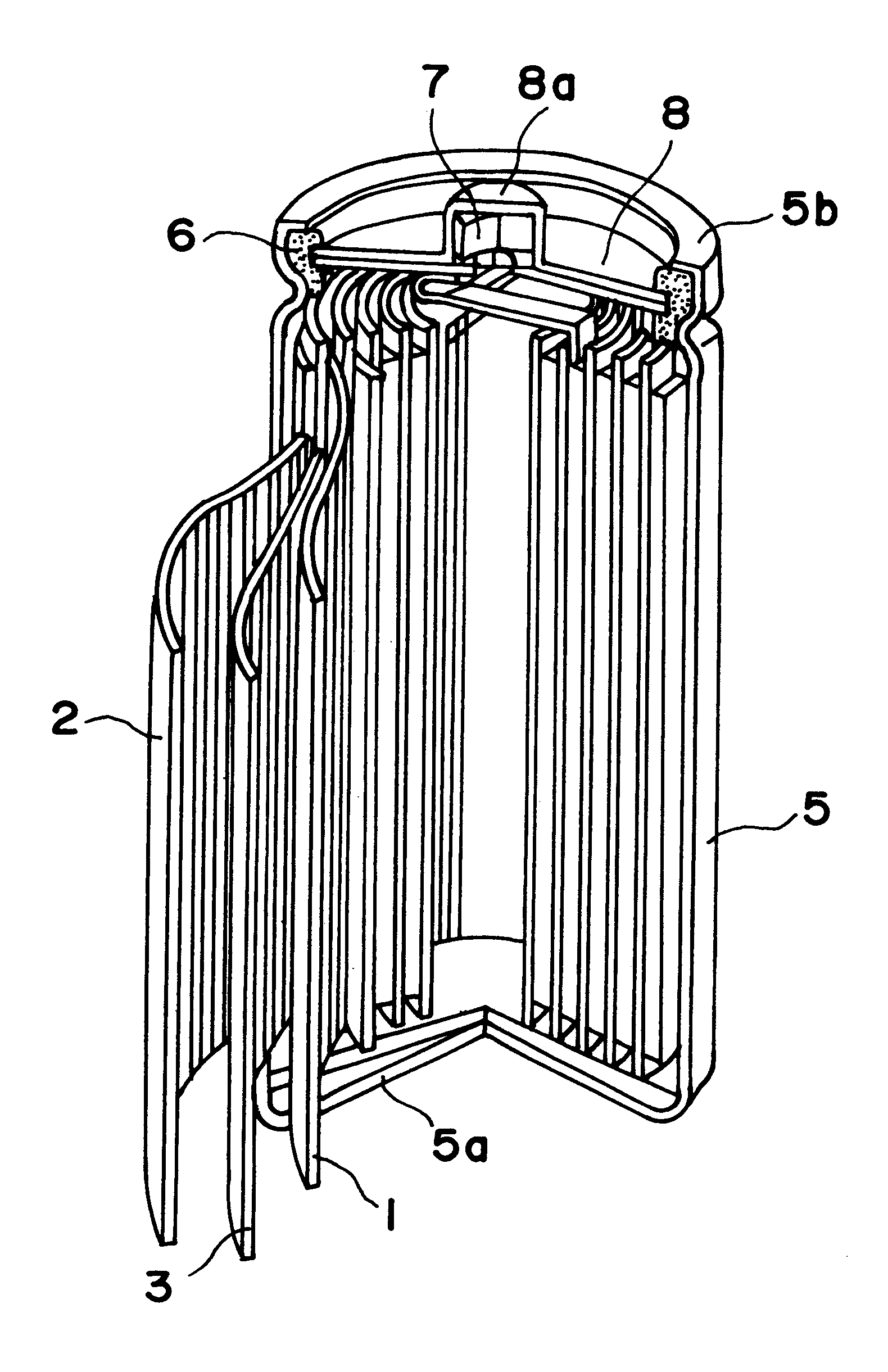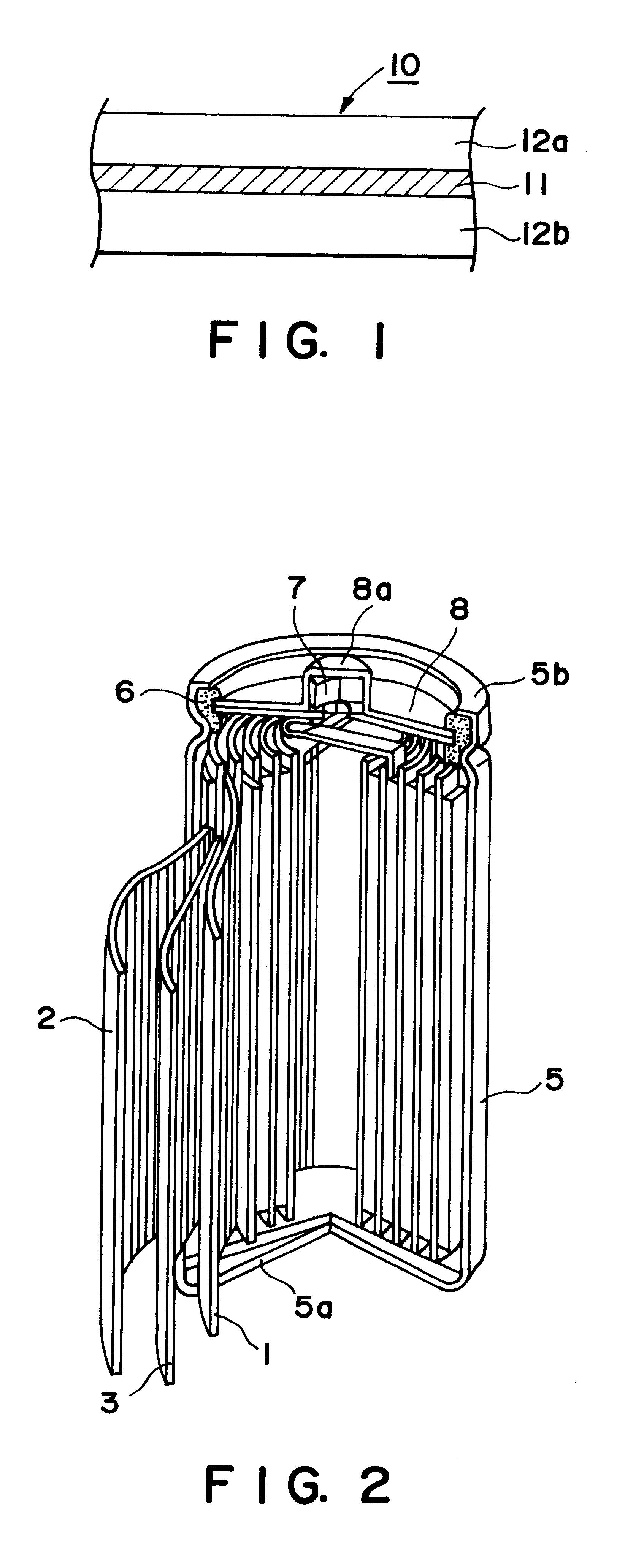Binder solution and electrode-forming composition for non-aqueous-type battery
a non-aqueous type, electrode-forming technology, applied in the direction of non-aqueous electrolyte cells, cell components, basic electric elements, etc., can solve the problems of binder film after application and drying, exhibiting a large degree of swelling, and a remarkably increased solution viscosity
- Summary
- Abstract
- Description
- Claims
- Application Information
AI Technical Summary
Benefits of technology
Problems solved by technology
Method used
Image
Examples
example 1
1000 ppm of maleic acid was added to the same lot of NMP as used in Comparative Example 1, and the solution was also diluted with ten times of deionized water, whereby the dilution showed a pH of 3.2. Then, into the NMP containing maleic acid, the above-mentioned vinylidene fluoride polymer was dissolved similarly as in Comparative Example 1 to prepare a binder solution at a concentration of 13 wt. %.
(Viscosity and Fluorine ion concentration measurement)
The binder solutions prepared in Comparative Example 1 and Example 1 were subjected to measurement of viscosity by using a rotating viscometer (according. to JIS K7117) and measurement of fluorine ion (F.sup.-) concentration.
(Film formation and Swelling test)
Each of the binder solutions prepared in Comparative Example 1 and Example 1 was cast onto a glass plate and dried at 130.degree. C. for 2 hours, followed by peeling, to form a ca. 200 .mu.m-thick film.
Then, each film thus obtained was dipped at 70.degree. C. for 72 hours in an e...
example 2
1000 ppm of malonic acid was added to the same lot of NMP as used in Comparative Example 2, and then the carboxyl group-containing vinylidene fluoride polymer was dissolved to form a binder solution at a concentration of 13 wt. %.
The binder solutions of the above Comparative Example 2 and Example 2 were respectively used for formation of a cast film similarly as in Example 1, and the resultant films were subjected to dipping in the electrolytic solution at 70.degree. C. for 72 hours similarly as in Example 1. As a result, the films exhibited swelling degrees after 72 hours as shown below.
example 3
1000 ppm of maleic acid was added to the same lot of NMP as used in Comparative Example 3, and then the vinylidene fluoride homopolymer used in Comparative Example 3 was dissolved therein to form a binder solution at a concentration of 13 wt. %.
The thus-formed binder solutions were subjected to measurement of viscosity and degree of film swelling similarly as in Example 1. The results are shown in Table 3 below.
Also in this case, the addition of maleic acid provided a binder solution showing a good viscosity increase-preventing effect and an improved film swelling resistance.
PUM
| Property | Measurement | Unit |
|---|---|---|
| Angle | aaaaa | aaaaa |
| Concentration | aaaaa | aaaaa |
| Substance count | aaaaa | aaaaa |
Abstract
Description
Claims
Application Information
 Login to View More
Login to View More - R&D
- Intellectual Property
- Life Sciences
- Materials
- Tech Scout
- Unparalleled Data Quality
- Higher Quality Content
- 60% Fewer Hallucinations
Browse by: Latest US Patents, China's latest patents, Technical Efficacy Thesaurus, Application Domain, Technology Topic, Popular Technical Reports.
© 2025 PatSnap. All rights reserved.Legal|Privacy policy|Modern Slavery Act Transparency Statement|Sitemap|About US| Contact US: help@patsnap.com


